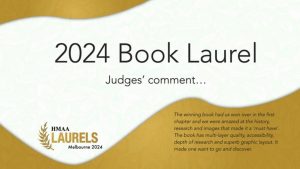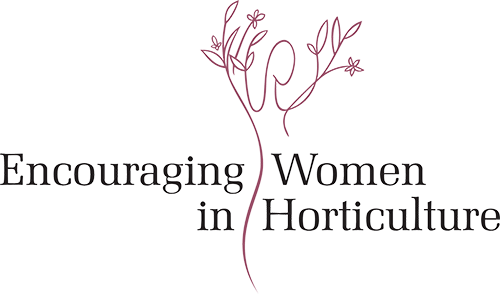What drew you to horticulture originally?
I think it’s in my DNA – but didn’t know it until later.
My mother loved plants (I vividly remember her Magnolia x soulangeana tree in the 1950s). My father did the landscaping – he was always creating terraces, digging and laying sandstone. My grandfather collected plants in Central and Northern Australia, specimens of which are in Herbaria around Australia, but I didn’t know that until much later.
As a child, I lived in the bushland suburb of Castlecrag in Sydney, designed by Walter and Marion Burley Griffin. My playground was the bush
What pathway did you take to get there?
It was circuitous. My career started as a pharmacy student at the University of Sydney, where I took Botany and Pharmaceutical Chemistry, two of the subjects that I really enjoyed. Later, living on some acres in Newcastle in NSW sparked a need to know how to manage the property, so, whilst working part time in Pharmacy, I took a course in Horticulture at the local TAFE. At College, a group of four slightly mature mums got together and started a propagation business, where we sold plants at local markets. I was the NSW state Dux of the course in my graduation year. I did further qualifications in teaching by completing a Dip Ed at the University of Newcastle. A move to Melbourne decided my fate when I successfully applied to the then Victorian College of Agriculture and Horticulture (now University of Melbourne) Burnley, for a teaching position. I was there for the next 30 years. During this time I also entered the field of journalism (print, radio, TV). Concurrently and together with my partner Rod McMillan, we wrote teaching materials for students of Horticulture, Agriculture and Environment and sold learning guides all over Australia (34 titles). The Studies in Horticulture series was tailored to the TAFE programme. An opportunity arose to develop and lead environmental tours to the Galapagos Islands and also to work at the international Research Station on the islands – the Charles Darwin Research Station (CDRS). We designed and constructed an indigenous plant garden for the home of the Director of the CDRS. This set the stage for a return visit to Galapagos to develop a Master Development Plan for their visitor site. This enabled me to combine many facets of my life – a love of plants, a love of the natural environment, an increased understanding of the interactions between geology, plants and animals, the ability to convey information in an amazing context (Galapagos) and to share the importance of conserving natural spaces. More natural history tours developed – to England, France, Madagascar, Machu Picchu, Peru, Amazon, Patagonia, Antarctica, Bali.
What obstacles did you encounter along the way?
Some originally perceived obstacles ended up being advantages.For example, both Studies in Horticulture books and the eco-cultural tours (Adland Tours to wild places) were offered to the University, who declined the offers and so Rod and I developed both these projects privately in our own time and as a result had higher degrees of freedom. This unknowingly (at the time) set the stage for wonderful world-wide journeys of discovery for us and others – and they are still developing. In the case of the Burnley Book, Covid 19 curtailed the writing process. Once the Book was published, there were obstructions from certain Burnley staff that hindered and delayed its distribution.
Who were your mentors?
Re: the practice of teaching, there were several colleagues at Burnley.
Re: the Burnley Book, mentors/collaborators include Historian Ann Synan, Garden Historian Sandra Pullman, Burnley Gardens manager Andrew Smith, U of M Burnley Archivist Jane Wilson and fellow Lecturer Rod McMillan.
What are you working on at the moment?
Right at this moment, I’m having a break (!!) after four years writing the Burnley Book and 20 months drama with the Burnley mob. Soon, I’ll be working on a film about my amazing grandfather Ted Ryko www.adland.com.au/ryko-project/
What does an average day consist of for you?
As much time as possible working in the garden. I love the tranquillity this brings me; almost like meditation where I switch in to natural sounds of the bush and switch out of the world and its craziness.
I live in a remote area so I grow lots of vegies. Our garden is more of a landscape with a large constructed wetland of 10 acres. The managed area is about 25 acres. So, my days are spent gardening, cooking, researching for and managing the tours. I go to the local gym, do a bit of yoga and socialise with friends at our local community space (aka the Briagolong Hotel). I go to Melbourne for various reasons incl. Friends of Burnley Gardens events,
What is your favourite plant?
Hard question. At the moment, it is Banksia plagiocarpa that I am nursing through the frosty times. It was discovered by John Dallachy, who was one of the founders of the Burnley Gardens site.
What would you like to say about your new book?
 It was an extraordinary journey. I tried to ‘meet’ the founders of the Burnley Gardens and discover their journeys. I learnt so much about the former principals of Burnley (who lived on site with their families), the design and designers and the evolution of the Gardens. What you see today is not what was there previously.
It was an extraordinary journey. I tried to ‘meet’ the founders of the Burnley Gardens and discover their journeys. I learnt so much about the former principals of Burnley (who lived on site with their families), the design and designers and the evolution of the Gardens. What you see today is not what was there previously.
What are your 3 most worthwhile tips that you can give to women who are starting out in the horticulture industry?
1. Get appropriate training/education – something that has stood me in good stead.
2. Grab hold of opportunities as they present – be bold and brave.
3. Network and make connections with industry groups, such as Encouraging Women in Horticulture and individuals.
If you would like to know more about Michele and her eco-tours do visit her website www.adland.com.au .
